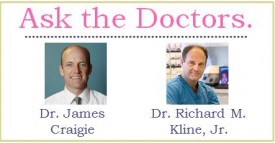 For several years, we’ve been told to reduce or cut fat from our diets. While it seems like good advice, this message is too simplistic. A better message is to make sure we get enough good fat in our diet and cut out the bad fat. Not all fats are equal, and once you know the difference, you’ll be well on your way to better health.
For several years, we’ve been told to reduce or cut fat from our diets. While it seems like good advice, this message is too simplistic. A better message is to make sure we get enough good fat in our diet and cut out the bad fat. Not all fats are equal, and once you know the difference, you’ll be well on your way to better health.
What is fat and why do we need it?
Essential fatty acids (EFAs) are just that: an essential part of our diet like protein, carbohydrate, vitamins, and minerals. EFAs cannot be produced by the body and must come from food. The truth is that you need a certain amount of fat to be healthy. In addition to providing energy and insulation, fat has several functions in the body:
- Your body needs dietary fat to transport and use the fat-soluble vitamins A, D, E, and K. These vitamins keep your eyes, skin, blood, kidneys, and bones healthy.
- Dietary fat, particularly omega-3 fatty acids, reduces symptoms of inflammatory conditions such as arthritis.
- Fat helps the body synthesize hormones, and it promotes healthy cell function.
- Children need fat to develop normally, both physically and mentally.
- Fat slows digestion and helps your body absorb nutrients.
- Your brain needs fat to function, and nerves are covered with a substance made from fat.
- Omega-3 fatty acids reduce depression, dementia, and memory problems.
Unfortunately, many people have been led to believe that any food with fat should be avoided, which has spawned an incredible number of “fat-free” foods. Fat gives food flavor, so to replace this flavor, manufacturers add sugar—not a good tradeoff.
Which are the good fats?
Good fats come in many foods, such as avocados, nuts and seeds, and fish. Moderation is the key. Don’t be afraid to cook in olive or coconut oil, which are more stable at high temperatures than vegetable oils. Go ahead and put real butter on your toast, and eat nut butters, olives, and fatty fish such as salmon. Put some real cream in your coffee.
The bad fat you want to avoid
Trans fats are found in stick margarine, vegetable shortening, and most packaged or processed foods. Trans fats are created in a laboratory by forcing hydrogen through vegetable oil to make it solid at room temperature. These fake fats increase inflammation in your body and can raise cholesterol.
Food manufacturers can claim a product has no trans fats if it has less than 0.5 grams per serving, so reading labels is vital to avoiding trans fats. If you see the words “partially hydrogenated” or “hydrogenated,” don’t eat it.
Loved this post and want more tips on healthy eating? Visit us on Facebook!





